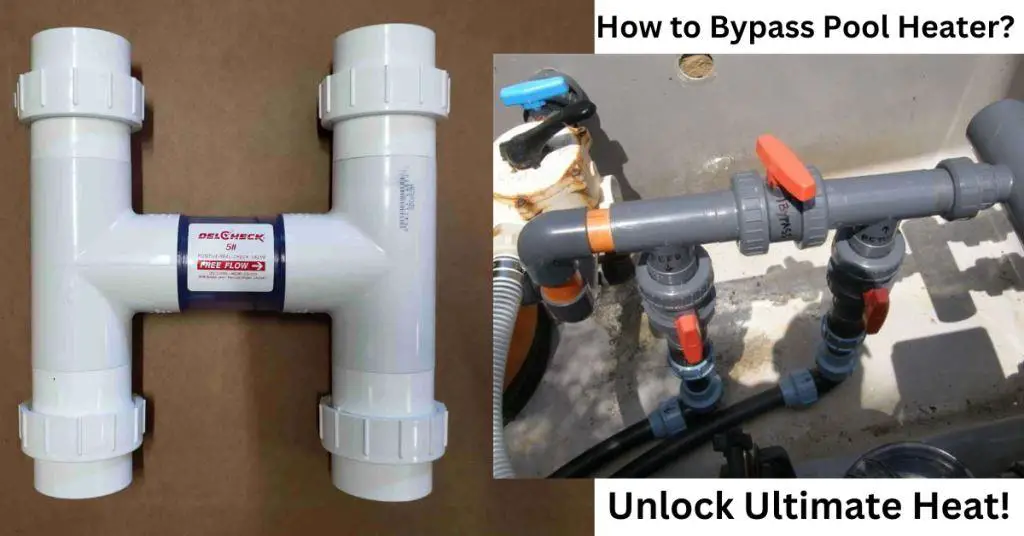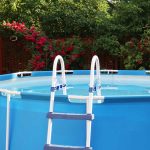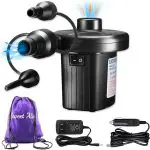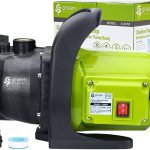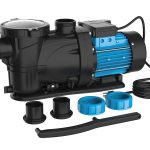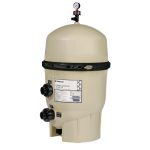To bypass a pool heater, you can install a bypass kit that allows water to flow around the heater. This helps to prevent the heater from being damaged or causing pressure issues.
Additionally, a bypass valve can be added to redirect the flow of water away from the heater. This not only protects the heater but also allows you to maintain a consistent temperature in your pool. Bypassing a pool heater is a simple and effective solution to ensure optimal performance and longevity of your pool heating system.
Benefits Of Bypassing Pool Heater
Bypassing your pool heater offers several benefits. Firstly, it increases heat efficiency by allowing water to flow freely without passing through the heater. This reduces strain on the heater and ensures that the water reaches the desired temperature more quickly.
Secondly, bypassing the heater saves energy by eliminating the need to heat the water during certain times, such as when the pool is not in use. This not only reduces your energy consumption but also extends the lifespan of the heater, as it won’t be constantly running.
Overall, bypassing your pool heater is a smart choice that can save you money, conserve energy, and prolong the life of your equipment.
Understanding Pool Heater Bypass System
A pool heater bypass system is an essential component of any pool heating system. It consists of various elements that work together to regulate the flow of water and divert it away from the heater when necessary. This helps prevent overheating and potential damage to the heater unit.
The main components of a bypass system include a bypass valve, plumbing connections, and a bypass loop. When the bypass valve is closed, water flows through the heater, allowing it to be heated. However, when the valve is open, water is directed away from the heater, creating a bypass loop that bypasses the heater entirely.
Proper installation and regular maintenance of the bypass system are crucial for ensuring its effectiveness and longevity. By understanding how the bypass system works and the importance of proper installation and maintenance, pool owners can effectively control their pool’s temperature and prolong the life of their heater.
Step-By-Step Guide To Bypassing Pool Heater
To bypass a pool heater, start by gathering the necessary tools and materials. Then, make sure to turn off the pool heater and prioritize safety. Next, locate and access the bypass valves and plumbing in your pool system. Finally, close and open the necessary valves to divert the water flow away from the heater.
Following these steps will allow you to bypass the pool heater effectively and safely. Remember to consult your pool system’s manual for specific instructions on locating and operating the bypass valves.
Common Mistakes To Avoid
When it comes to bypassing a pool heater, it’s important to avoid common mistakes that can hinder its performance. One common mistake is incorrect valve settings, which can disrupt the flow of water and prevent proper heating. Another mistake to avoid is inadequate insulation, as this can lead to heat loss and decrease the efficiency of the heater.
Poor installation or lack of maintenance is also a common mistake that can result in issues with the heater. It’s important to ensure that the heater is installed correctly and that regular maintenance is performed to keep it running smoothly.
By avoiding these common mistakes, you can ensure that your pool heater operates efficiently and effectively.
Troubleshooting Common Issues
When experiencing low water pressure or flow in your pool heater, there are a few troubleshooting steps you can take. First, check the pool pump and filter for any blockages or debris that may be restricting water flow. Clean or replace the filter if necessary.
Next, ensure that the pool valves are fully open to allow for proper circulation. If the problem persists, examine the bypass system for any leaks or damage. Inspect the bypass valves and fittings for any signs of wear or cracking.
Repair or replace any faulty components to restore proper water flow. Additionally, inconsistent heating or temperature fluctuations can be caused by a malfunctioning bypass system. Check for any leaks or air pockets in the bypass plumbing and resolve them accordingly.
By identifying and troubleshooting these common issues, you can ensure optimal performance of your pool heater.

Credit: www.amazon.com
Frequently Asked Questions For How To Bypass Pool Heater?
Can You Bypass The Heater For The Pool?
Yes, you can bypass the heater for your pool. Bypassing the heater allows water to flow directly back to the pool without going through the heating system. This is useful if you don’t want to heat the pool water or if the heater is malfunctioning and needs repair.
To bypass the heater, you will need to install a bypass valve system. This system allows you to divert the water flow away from the heater and back to the pool. By using the bypass valve, you can control whether the water goes through the heater or bypasses it.
It’s important to properly install and configure the bypass valve to ensure proper water flow and prevent any damage to the heating system.
What Is Bypass Mode On Pool Heater?
Bypass mode on a pool heater refers to a setting that allows water to flow around the heating element, bypassing it completely. This is useful in certain situations, such as when the heater is being serviced or when the pool is being actively used and the water doesn’t need to be heated.
By switching to bypass mode, you can ensure that the water continues to circulate through the pool system without being heated. This can help extend the lifespan of the heating element and prevent any potential damage while the heater is not in use.
Additionally, bypass mode can also be used to regulate the water temperature and maintain a comfortable swimming environment. To activate bypass mode, you will need to locate the bypass valve on your pool heater and follow the manufacturer’s instructions for switching to the bypass setting.
Should I Bypass Pool Heater When Shocking Pool?
Bypassing the pool heater when shocking the pool is recommended to prevent damage to the heater. Shocking your pool involves adding high levels of chemicals to kill bacteria and algae. These chemicals can be corrosive and may cause damage to the heater’s internal components.
By bypassing the heater, you ensure that the high chemical levels only circulate in the pool water and not through the heater system. To bypass the heater, you can use a bypass valve or a bypass kit specifically designed for this purpose.
This allows you to divert the water flow around the heater, keeping it isolated during the shocking process. It is important to follow the manufacturer’s instructions for your specific heater model and consult a professional if you are unsure about the bypassing process.
What Is The Black Hose Pool Heater Trick?
The black hose pool heater trick is a DIY method to bypass or temporarily disable your pool heater. By using a black garden hose, you can create a bypass loop that redirects water flow without going through the heater. This trick is useful when you want to maintain the normal water circulation in your pool without heating it, or if you need to make repairs to your pool heater.
To use the black hose pool heater trick, simply disconnect the inlet and outlet pipes of your pool heater and connect them with the black hose, forming a loop. This allows water to flow directly from the pump to the return pipes without going through the heater.
Make sure to properly secure all connections to prevent leaks.
Conclusion
To summarize, bypassing your pool heater can be a simple and effective solution to regulate the water flow and optimize the heating process. Having a bypass system allows you to divert water away from the heater when necessary, preventing any damage or overheating.
By following the steps outlined in this blog post, you can easily bypass your pool heater and enjoy a well-heated and properly functioning pool. Remember to consult the manufacturer’s instructions and seek professional assistance if you are unsure about any step in the process.
Maintaining a proper balance of water flow, pressure, and temperature is crucial for the longevity and efficiency of your pool heater. So, take the time to understand and implement a bypass system for your pool heater, and enjoy optimal heating for a relaxing and comfortable swimming experience.

